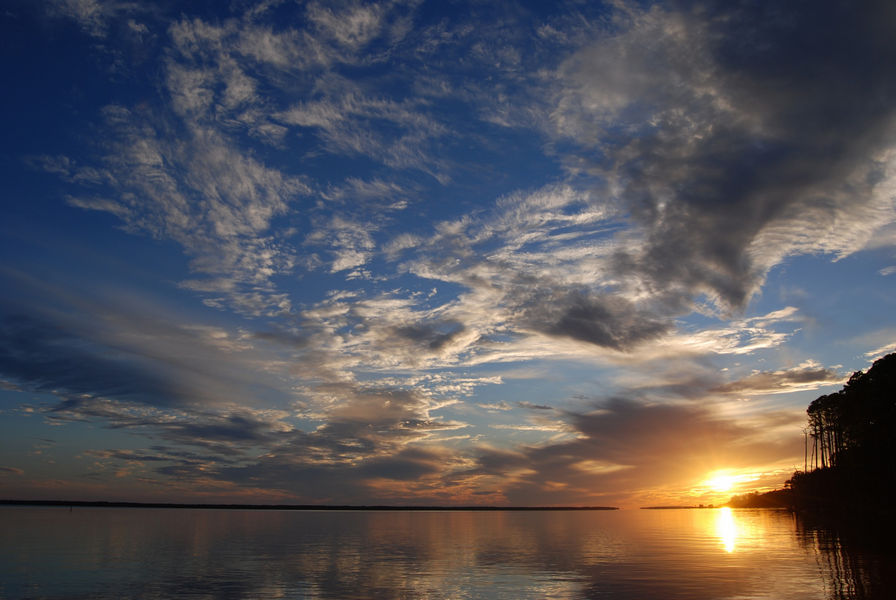Monitoring submerged aquatic vegetation (SAV) has shown particular promise in detecting specific factors that may influence both short- and long-term changes to nearshore aquatic ecosystems. This vegetation can serve as an important indicator to the health of an estuarine system. SAV also plays an important ecological role to the aquatic environment by providing food and habitat for waterfowl, fish, shellfish and invertebrates.
Submerged vegetation in the Apalachicola system is currently being threatened by several sources, including: pollution, developmental pressures, dredging and filling activities, exotic species and the threat of freshwater diversion. Any changes or loss of this vegetation may indicate that the estuarine system is being stressed, therefore, a monitoring program is essential to the long-term goal of protecting the system. East Bay supports extensive beds of fresh and brackish water species of submerged macrophytes, including shoal grass (Ruppia maritima) and tapegrass (Vallisneria americana), which grow primarily in the area of the bay system characterized by high turbidity, low salinity and fresh water inputs from local watersheds.
Changes in SAV distribution can reflect the health of a water body, and losses of SAV may signal water quality problems. These plants are important components of estuarine systems and benefit estuarine species indirectly by helping to maintain the viability of the ecosystem. Their photosynthesis adds dissolved oxygen to the water, and their leaves and roots help stabilize the shoreline against erosion. The plants also absorb nutrients, which can be major estuarine pollutants. SAV is extremely sensitive to disturbance and the plants require specific physical and chemical conditions to remain vigorous.
The SAV project at ANERR began in May 2002 with reconnaissance surveys in East Bay and the Apalachicola River for possible, productive sites with field monitoring beginning in spring 2003. One of the goals of this project will be to determine any changes in SAV health and distribution associated with long-term changes in water quality. This type of detailed monitoring will allow us to implement appropriate management practices. Transect monitoring will be used to document site-specific declines or improvements in SAV abundance and distribution, and changes in depth distribution and species composition over time. The transects will be at fixed locations and marked with permanent PVC stakes. A quadrat will be placed at intervals along the transect line and the following parameters will be measured within the quadrats: water depth, species composition, shoot density, percent occurrence, canopy height and degree of epiphytization.
Water quality parameters collected include: salinity, temperature, dissolved oxygen, turbidity, pH and water color. In addition, onsite tide information, general site characteristics, GPS location and weather conditions are recorded. Sediments are also collected with a core sediment sampler and looked at for grain-size analysis and percent organic analysis. Light penetration, nutrient supply and seasonality are also monitored. Many shallow marine communities are dependent upon the presence of these grasses; without this vegetation, the entire associated community could drastically change.


